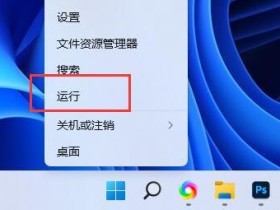前言
在Vue中State使用是单一状态树结构,应该的所有的状态都放在state里面,如果项目比较复杂,那state是一个很大的对象,store对象也将对变得非常大,难于管理。于是Vuex中就存在了另外一个核心概念 modules。本文就来总结 modules 相关知识点。
正文
1 、什么是模块Modules
Vuex允许我们将store分割成模块(Module), 而每个模块拥有自己的state、getters、mutation、action等,甚至是嵌套子模块——从上至下进行同样方式的分割。
const moduleA = { state: ()=> ({ ... }), mutations: { ... }, actions: { ... }, getters: { ... } } const moduleB= { state: ()=> ({ ... }), mutations: { ... }, actions: { ... } } const store=new Vuex.Store({ modules: { a: moduleA, b: moduleB } })this.store.state.a// -> 获得moduleA 的状态this.store.state.b// -> 获得moduleB 的状态
内部state,模块内部的state是局部的,也就是模块私有的,
内部getter,mutation,action 仍然注册在全局命名空间内,这样使得多个模块能够对同一 mutation 或 action 作出响应。
2、模块内部参数问题
对于模块内部的 mutation 和 getter,接收的第一个参数是模块的局部状态对象 state。
对于模块内部的 action,局部状态通过 context.state 暴露出来,根节点状态则为 context.rootState:
对于模块内部的 getter,根节点状态会作为第三个参数暴露出来:
const moduleA = { state: ()=> ({ count:"", }), actions: {//这里的state为局部状态,rootState为根节点状态 incrementIfOddOnRootSum ({ state, commit, rootState }) {if ((state.count + rootState.count) % 2 === 1) { commit('increment') } } } mutations: {// 这里的 `state` 对象是模块的局部状态 increment (state) { state.count++ } }, getters: {//这里的state为局部状态,rootState为根节点状态 doubleCount (state) {return state.count * 2 }, sumWithRootCount (state, getters, rootState) {return state.count + rootState.count } } }
3、模块命名空间问题
(1)namespaced: true 使模块成为带命名空间的模块
当模块被注册后,它的所有 getter、action 及 mutation 都会自动根据模块注册的路径调整命名。
const store =new Vuex.Store({ modules: { account: { namespaced:true,// 模块内容(module assets) 在使用模块内容(module assets)时不需要在同一模块内额外添加空间名前缀。 state: () => ({}),// 模块内的状态已经是嵌套的了,使用 `namespaced` 属性不会对其产生影响 getters: { isAdmin() {},// ->使用: getters['account/isAdmin'],// 你可以使用 getter 的第四个参数来调用 someGetter(state, getters, rootState, rootGetters) {// getters.isAdmin// rootGetters.someOtherGetter }, }, actions: { login() {},// ->使用: dispatch('account/login')// 你可以使用 action 的第四个参数来调用//若需要在全局命名空间内分发 action 或提交 mutation,将 { root: true } 作为第三参数传给 dispatch 或 commit 即可 someAction({ dispatch, commit, getters, rootGetters }) {// getters.isAdmin;// rootGetters.someGetter;// dispatch("someOtherAction");// dispatch("someOtherAction", null, { root: true });// commit("someMutation");// commit("someMutation", null, { root: true }); }, someOtherAction(ctx, payload) {},// 若需要在带命名空间的模块注册全局 action,你可添加 root: true,并将这个 action 的定义放在函数 handler 中。 otherAction: { root:true, handler(namespacedContext, payload) {},// -> 'someAction' }, }, mutations: { login() {},// ->使用: commit('account/login') },// 嵌套模块 modules: {// 继承父模块的命名空间 myPage: { state: ()=> ({}), getters: { profile() {},// -> 使用:getters['account/profile'] }, },// 进一步嵌套命名空间 posts: { namespaced:true, state: ()=> ({}), getters: { popular() {},// -> 使用:getters['account/posts/popular'] }, }, }, }, }, });
(2)带命名空间的绑定函数的使用
当使用 mapState, mapGetters, mapActions 和 mapMutations 这些函数来绑定带命名空间的模块时,写起来可能比较繁琐:
computed: { ...mapState({ a: state=> state.some.nested.module.a, b: state=> state.some.nested.module.b }) }, methods: { ...mapActions(['some/nested/module/foo',// -> this['some/nested/module/foo']() 'some/nested/module/bar'// -> this['some/nested/module/bar']() ]) }
createNamespacedHelpers 创建基于某个命名空间辅助函数,它返回一个对象,对象里有新的绑定在给定命名空间值上的组件绑定辅助函数。
import { createNamespacedHelpers } from 'vuex'
const { mapState, mapActions }= createNamespacedHelpers('some/nested/module')
exportdefault {
computed: {// 在 `some/nested/module` 中查找 ...mapState({
a: state=> state.a,
b: state=> state.b
})
},
methods: {// 在 `some/nested/module` 中查找 ...mapActions(['foo','bar'
])
}
}
4、模块动态注册
在 store 创建之后,你可以使用 store.registerModule 方法注册模块
import Vuex from 'vuex' const store=new Vuex.Store({/* 选项*/ })// 注册模块 `myModule` store.registerModule('myModule', {// ... })// 注册嵌套模块 `nested/myModule` store.registerModule(['nested', 'myModule'], {// ... })
之后就可以通过 store.state.myModule 和 store.state.nested.myModule 访问模块的状态。
也可以使用 store.unregisterModule(moduleName) 来动态卸载模块。注意,你不能使用此方法卸载静态模块(即创建 store 时声明的模块)。
可以通过 store.hasModule(moduleName) 方法检查该模块是否已经被注册到 store。
写在最后
以上就是本文的全部内容,希望给读者带来些许的帮助和进步,方便的话点个关注,小白的成长之路会持续更新一些工作中常见的问题和技术点。






